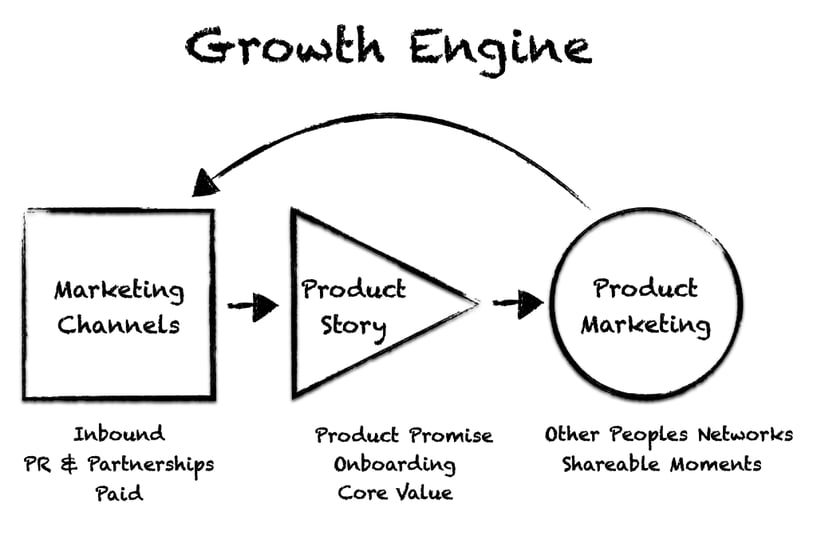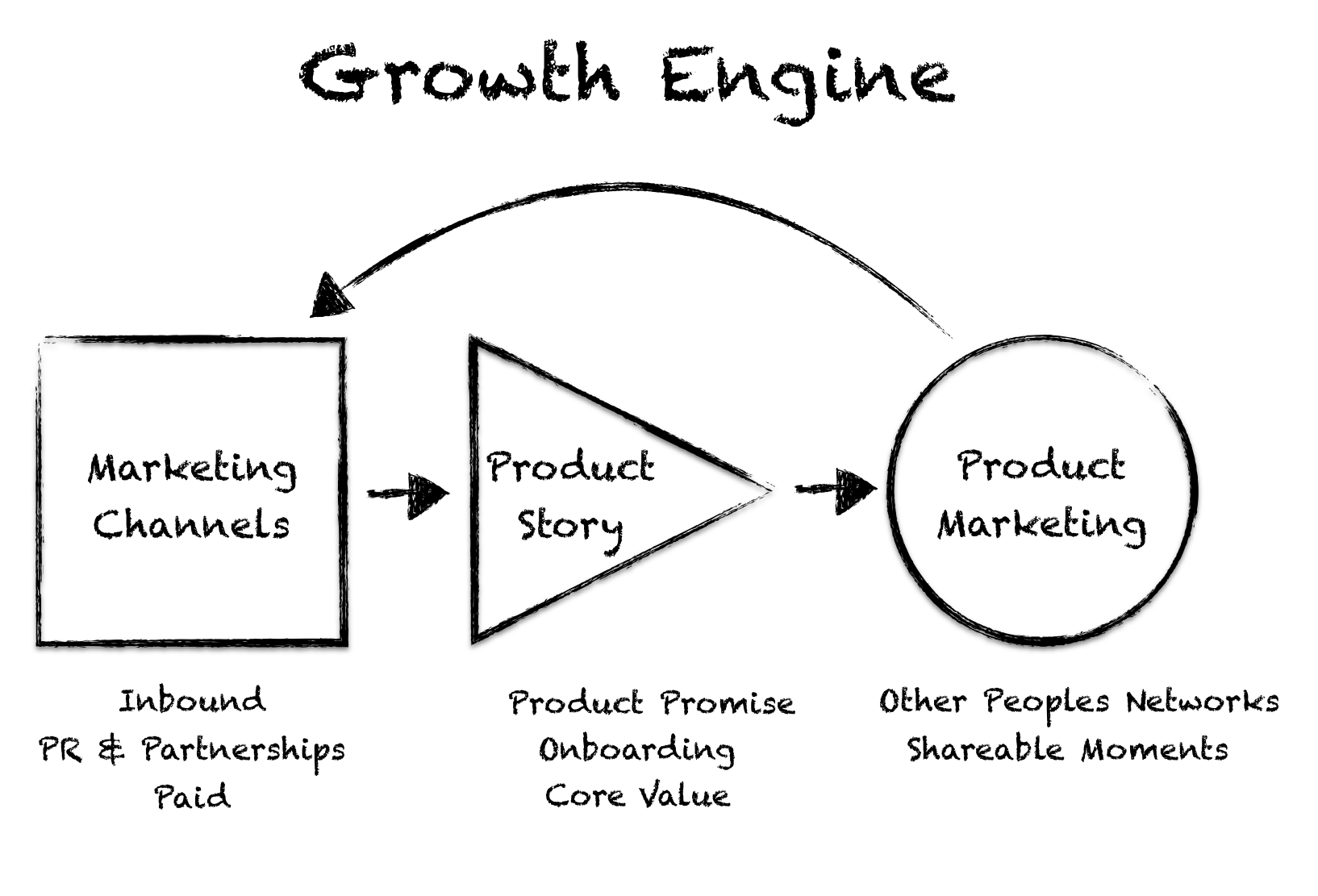When I first moved to San Francisco I spent the first year immersed in startup marketing. I believed that regardless of the company I eventually started, that as long as I understood marketing I would be widely successful.
Man was I wrong.
What I ended up learning the hard way – when building Flowtown – was that you couldn’t market your way out of a shitty product.
It turns out that THE MOST important aspect is the product – duh, right?
That being said, my year spent reading every book, attending all of the best events and meeting the world top marketers wasn’t wasted.
I ended up learning a lot about viral loops, marketing tactics and the psychology of a customer’s needs.
Back in the day we called it metrics based marketing. It was a discipline of building out the instrumentation required to be able to accurately assess a customer’s experience and growth opportunities.
Today it’s called Growth Hacking, which I’ll admit has a better ring to it.
What I eventually learned is that when you put it all together, a great marketing strategy + product story + product marketing, you end up building a killer growth engine.
When it works, it’s a beautiful thing to watch.
Exclusive Bonus: Download my Growth Guide: The Top 7 Apps I Use To Growth Hack My Startups.
It actually reminds me of the power of compound interest. Once it “clicks” it just takes off like a fly wheel.
Finding your growth engine is f-ing HARD.
It’s hard because you have quite a few major areas to figure out. You have the product, the market and your marketing channels.
Some call it P/M (product / market) fit, but that’s just one part of it.
To really scale and build towards escape velocity, you need to build an engine that delivers on repeatable, scaleable and sustainable growth… or what’s called a Growth Engine.
Here are my thoughts on the 3 major parts of a well tuned Growth Engine.
3 Parts To The Engine
When I’ve worked on building my own startup’s sustainable Growth Engine, or advised others to build theirs, I always go over these three major parts:
- Marketing Channels
- Product Story
- Product Marketing
Each one of them are EXTREMELY difficult to perfect, but when you break them down and look at each holistically, you can start to understand how it all works together.
Marketing Channels: The Path Your Customer Follows To Discover Your Product
These are activities that generate awareness and visitors to your website. The spectrum of tactics you can use is pretty wide and it ranges from free (time invested) to paid (money invested).
At the top of free, there would be inbound marketing (a.k.a. content marketing) where you create content that your ideal customers would love and will pave the way to acquire new customers.
The middle is a mix of free and paid, things like press and partnerships.
The bottom includes all your straight up paid channels like Facebook, LinkedIn, Youtube and radio (yep, radio – have you listened to Sirius lately? .com startups are 10% of the ads), so your marketing team run ads towards your target market, generate leads and your sales team enrolls new customers.
List of Marketing Channels (Sorted by free to paid)
- Free: Blogging, Social Media
- Mid: (Free + Paid): Press and Partnerships
- Paid: Marketing Channels like Facebook, Radio and Print
Understanding how each one of these works, how others in your industry have successfully leveraged them or even being aware of their cost and reach in general is a great place to start.
You don’t need to be a master at any of them, but it’s good to be generally aware of what’s possible so you can build your Growth Engine.
As I mentioned above, even if you’ve got all the money in the world to spend on marketing it won’t work if your product sucks, so let’s discuss that next.
Product Story: The Story Your Product Tells By How You Present It To Your Customers
The Product Story is the story your customer tells themselves about your solution after they’ve been to your site.
It’s their answer to: “Who is this for? How does it work? Why is it different?”, etc.
The story is made up of every interaction with the product, from the design, the copy, the way you sign a user up, to what you ask them to do in their first experience.
Another way to explain it: It’s the movie they create in their mind, for how your solution lives in their world.
Many founders never make a conscious decision as to how their Product Story is told, or what that story should be in the first place.
That’s a HUGE mistake.
To really dial it in, you need to consider these major components of your product:
- Product promise: What problem you say you can solve and for who?
- Onboarding: How you unfold your solution and what you ask your customer to do.
- Core Value: What’s that one feature that if your customer uses it, they walk away truly understanding the power of your product?
The Product Story is the MOST important aspect to focus on for startups. It’s what you’re creating every time you add a new feature, redesign your homepage or change your pricing.
Once you’ve refined your product to a point that you’ve got your customers excited about the product, then you need to start thinking about how your product will grow on its own, or what I call “Product Marketing.”
Product Marketing: Optimizing The Way Your Product Grows As It Delivers Value For Your Customers
Once you have an idea of the Marketing Channels you can leverage to get consistent traffic to your product – and you’ve built a product that creates the right Product Story for your ideal customer – then you need to think of ways you can have your product market itself.
This is a HUGE area of growth for your company.
It’s about thinking through the interactions a customer has with your product and figuring out where it would make sense to ask them to take an action that would cause your product to be presented to a new group of potential customers.
If you think about it, every great product has these interactions – if not dozens. Here’s just a small list to give you a sense of what I mean:
- Slack.com: Allows you to invite others to collaborate and chat.
- Facebook.com: Allows you to tag users in a photo and if they’re not on FB, to invite them.
- Freshbooks.com: Send an invoice to someone.
- YouTube.com: Embed a video on another site.
- Quora.com: Share your question/answer on social media.
- Airbnb.com: Post your listing to Craigslist
- AngelList.com: Invite someone to confirm an element of your profile.
Asking the user to take an action that makes total sense (ex: Airbnb prompting to post a newly created listing to Craigslist) is the only way to build a sustainable product marketing feature.
Many startups fail at growth because they ask their users to do something at the wrong time, or position it in a way that doesn’t make sense (ex: asking to refer a friend before they’ve experienced your products core value).
On top of all of those challenges, each feature that helps your product grow also tells a story – and if you do it wrong – it can position you in the wrong light.
An example would be asking a user to upload their address book of friends during a sign-up process for a Business to Business (B2B) solution.
It just tells a different story, almost like your app is a social network because that’s what they expect.
Mapping Out Your Engine
The key take away from this post is that you should be thinking about your growth strategy as an engine and ensuring each piece is working properly before moving on to the next one.
Most startups die because they try to do too many things at once. When things don’t work out, they can’t figure out what strategy failed, even when one might have shown promise.
So for now, just map out the different aspects of your product’s engine and any of the strategies you’ve implemented so far.
Are you doing any marketing? Cool … write that down.
Do you have an on-boarding flow for your product? … if not, quickly wireframe what you think it should look like.
Have you built any features that you hoped would help your product grow? …write those down as well. If you’ve got some data on how they did, that would be a plus to capture as well.
Step one is to do an inventory of your product so you know what you’re working with… then from there you can refine, remove or create something that delivers real and sustainable growth!
If you have any questions be sure to post a comment below… it’ll help guide my future posts on this topic and I promise to respond to each one.
—
If you’d like to receive personalized video training, get notified when I post a new blog, or invites to private events – be sure to subscribe to my newsletter.
What you should do now
- Book a Growth Session and learn the 3 things you should do today to unblock your SaaS potential and start scaling.
- Read more articles in our blog.
- If you know someone who’d enjoy this article, share it with them via Facebook, Twitter/X, LinkedIn, or email.

